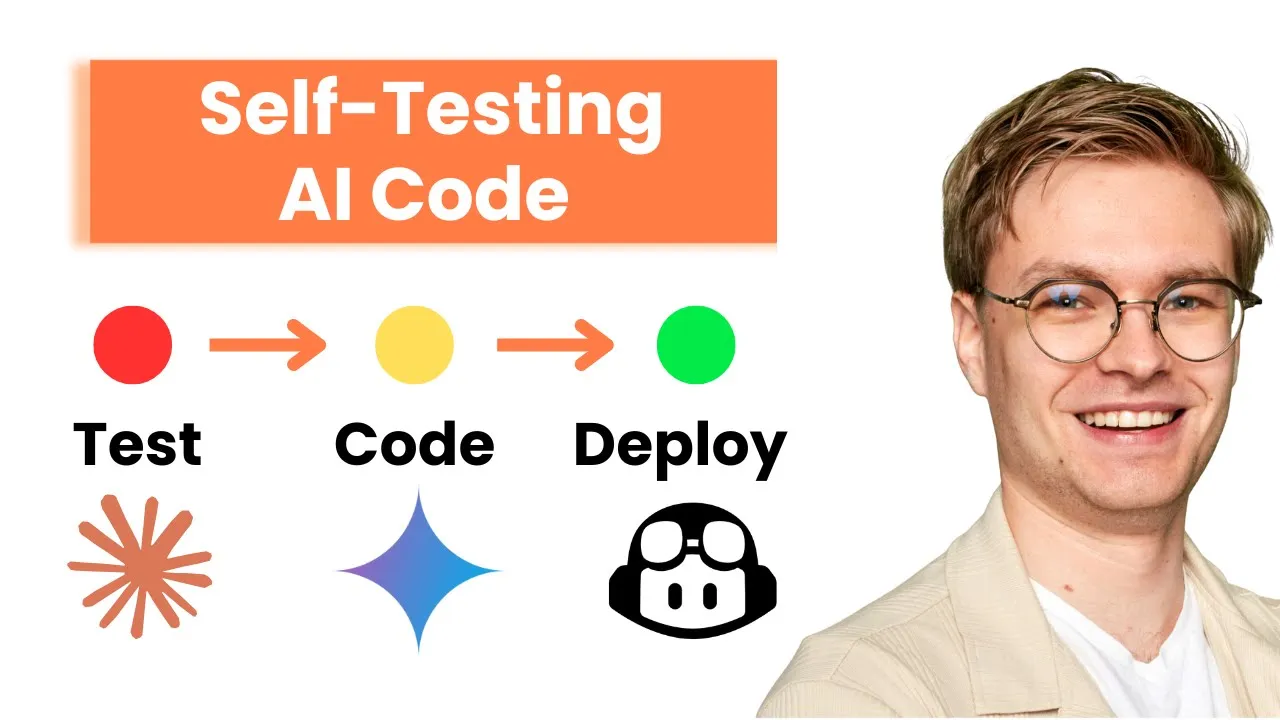Test-Driven Development for AI Coding Success
Test-Driven Development isn’t just a nice-to-have practice when working with AI-generated code. It’s the difference between shipping reliable software and spending weeks debugging mysterious production failures. Most developers skip proper testing with AI code because it “looks right” and passes basic functionality checks. This approach creates a false sense of security that leads to expensive failures in production.
Traditional development teaches us to write tests after implementation, but AI coding inverts this relationship. When you generate code without clear requirements and validation criteria, you end up with implementations that work for unknown scenarios while failing for the cases that matter most to your users.
Why TDD Transforms AI Code Reliability
Test-Driven Development provides the structured approach needed to harness AI coding productivity while maintaining code quality and reliability standards.
The fundamental challenge with AI-generated code lies in its unpredictability. While human developers understand the reasoning behind their implementation choices, AI-generated code operates as a black box. You receive syntactically correct solutions without insight into the assumptions, limitations, or edge cases the AI considered during generation.
TDD addresses this uncertainty by establishing clear success criteria before code generation. When you define tests first, you create explicit specifications that guide AI code generation toward solutions that meet your actual requirements rather than the AI’s interpretation of your requirements.
This approach reveals gaps between your expectations and AI implementation early in the development cycle. Instead of discovering issues during integration testing or production deployment, TDD surfaces problems immediately when the generated code fails to satisfy your predefined test cases.
The testing-first approach also improves the quality of AI-generated code by providing better context. When you include test cases in your AI prompts, the generated solutions are more likely to handle edge cases, error conditions, and boundary scenarios that might otherwise be overlooked.
Understanding AI coding errors and troubleshooting approaches becomes less critical when TDD prevents many common issues from reaching production environments.
Implementing TDD with AI Code Generation
Effective TDD for AI coding requires adapting traditional testing approaches to address the unique characteristics of AI-generated implementations.
Start by writing comprehensive test cases that define not just happy-path scenarios but also error conditions, edge cases, and performance requirements. These test cases serve as specifications that guide AI code generation toward more complete and robust implementations.
Your test suite should include input validation tests that verify the code handles unexpected data types, null values, and boundary conditions appropriately. Error handling tests ensure the generated code fails gracefully when encountering issues rather than crashing or producing incorrect results.
Performance tests validate that AI-generated solutions meet efficiency requirements under realistic load conditions. Many AI implementations choose straightforward algorithms that work correctly but perform poorly at scale. Performance tests catch these issues before they impact production systems.
Integration tests verify that AI-generated components work correctly within your existing system architecture. These tests catch interface mismatches, dependency conflicts, and compatibility issues that aren’t apparent when testing components in isolation.
Building Robust Test Suites for AI Code
Comprehensive test suites for AI-generated code must address both functional correctness and production readiness across multiple dimensions.
Unit tests for AI-generated functions should cover a broader range of scenarios than traditional code testing. Include tests for data type variations, null handling, empty collections, and boundary values. AI code often makes assumptions about input characteristics that don’t hold in production environments.
Property-based testing provides particularly valuable validation for AI-generated implementations. Instead of testing specific input-output pairs, property-based tests verify that the code maintains logical invariants across a wide range of input variations. This approach catches edge cases that might not be obvious when writing example-based tests.
Security-focused tests are essential for AI-generated code, which frequently introduces vulnerabilities through insufficient input validation or improper resource handling. Include tests that verify protection against injection attacks, proper authentication handling, and secure data processing patterns.
Failure scenario testing validates that AI-generated code handles system failures gracefully. Test behavior when external dependencies are unavailable, when resources are exhausted, and when unexpected errors occur. This testing approach ensures that AI-generated components don’t destabilize broader system functionality during adverse conditions.
TDD Patterns for AI Development Workflows
Successful TDD with AI coding requires establishing patterns and workflows that streamline the test-first development process while maximizing AI productivity benefits.
Develop a systematic approach for writing test cases before generating AI code. Start with high-level behavioral tests that define the expected functionality, then add detailed tests for error handling, performance requirements, and edge cases. This comprehensive test suite provides clear specifications for AI code generation.
Use test cases as context in your AI prompts to improve code generation quality. When you include relevant test scenarios in your prompts, AI tools generate implementations that are more likely to satisfy your actual requirements rather than making incorrect assumptions about intended behavior.
Implement rapid feedback loops that run tests immediately after AI code generation. This immediate validation approach allows you to iterate quickly when generated code doesn’t meet test requirements, rather than discovering issues later in the development cycle.
Create reusable test templates for common AI coding patterns. When you frequently generate similar types of functionality, standardized test templates ensure consistent validation approaches while reducing the time required to establish comprehensive test coverage.
Continuous Testing in AI Development
Maintain code reliability throughout the development lifecycle through continuous testing approaches that adapt to the iterative nature of AI-assisted development.
Automated testing pipelines become critical when working with AI-generated code because the implementation may change significantly between iterations. Continuous integration systems should run comprehensive test suites automatically whenever AI code is updated or regenerated.
Regression testing gains additional importance in AI development workflows. Because AI code generation can produce different implementations for the same requirements, automated regression tests ensure that functionality remains consistent even when the underlying implementation changes.
Monitor test coverage metrics specifically for AI-generated code components. While high test coverage doesn’t guarantee correct behavior, insufficient coverage often indicates missing validation for critical edge cases or error conditions that AI implementations commonly overlook.
Performance testing should be integrated into continuous testing pipelines to catch performance regressions early. AI code regeneration can introduce inefficient algorithms or resource usage patterns that impact system performance under load.
The combination of TDD principles with AI coding tools creates a powerful development approach that maximizes productivity while maintaining quality standards. By establishing clear test specifications before code generation, you guide AI tools toward more reliable implementations while building comprehensive validation systems that catch issues before they reach production.
This systematic approach transforms AI coding from a potentially risky practice into a reliable development methodology. The investment in comprehensive testing infrastructure pays dividends through reduced debugging time, fewer production issues, and increased confidence in AI-generated implementations.
For organizations implementing MLOps best practices, TDD provides the foundation for reliable model deployment and maintenance processes that depend on robust, well-tested code components.
To see exactly how to implement these TDD practices with AI coding tools, watch the full video tutorial on YouTube. I walk through each step in detail and show you the technical aspects not covered in this post. If you’re interested in learning more about AI engineering, join the AI Engineering community where we share insights, resources, and support for your learning journey.

